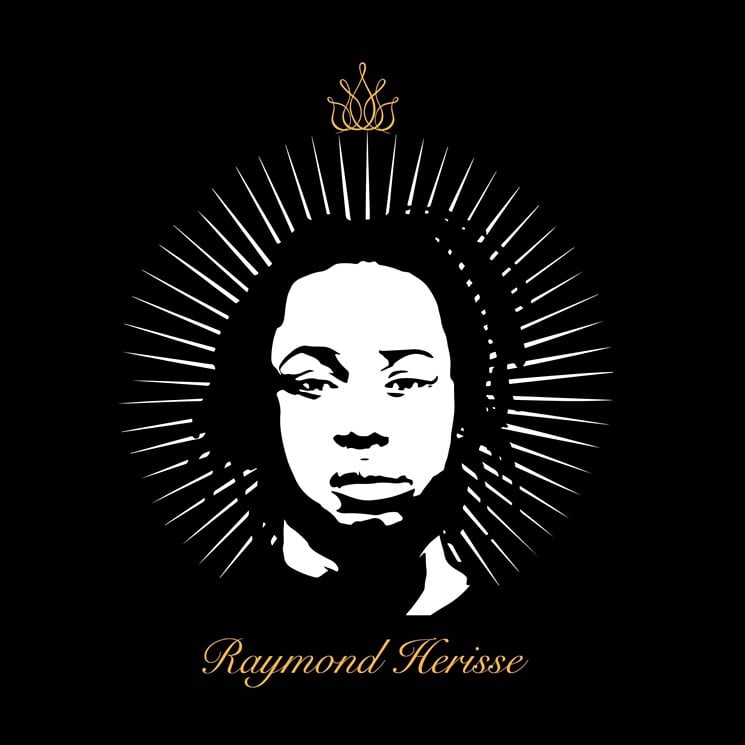Law & Politics
A Judge Has Ruled in Favor of Miami Beach After the City Removed an Artwork Memorializing a Man Gunned Down by Police
The city’s censoring of the commissioned mural constituted protected “government speech,” the judge concluded.

The city’s censoring of the commissioned mural constituted protected “government speech,” the judge concluded.

Taylor Dafoe

A district court judge in Florida has ruled that the City of Miami Beach had the right to censor a public artwork depicting Raymond Herisse, a Haitian American man who was killed by Miami Beach police in 2011.
The 4-by-4-foot vinyl artwork, created by Miami artist Rodney “Rock” Jackson, was commissioned by the city and installed in 2019 for the public art show “ReFrame Miami Beach.” Conceived as a tribute to Herisse, it depicted the deceased man’s silhouette encircled by rays of light.
However, the day after the exhibition opened as part of Miami’s Urban Beach Weekend celebrations, the city demanded that the show’s organizers remove the artwork from view. After the piece was taken down, a small sign that read, “This artwork has been removed at the request of the Miami Beach Police,” was put up in its place.
In 2020, the Florida chapter of the American Civil Liberties Union (ACLU) filed a lawsuit against the city, alleging that the removal of the mural violated the First Amendment rights of Jackson and “ReFrame” curators Octavia Yearwood and Jared McGriff. (A third curator, Naiomy Guerrero, was later added as a plaintiff. Similarly, Miami Beach Mayor Dan Gelber and former City Manager Jimmy Morales were named in the initial filing, but have since been removed from proceedings.)
“I was stunned,” Jackson said of the city’s alleged censorship during a press conference at the time. “Then I slowly became outraged. I could not understand how an image that was meant to memorialize someone could be offensive.”
But late last month, Florida Southern District Judge Marcia G. Cooke ruled in favor of Miami Beach, saying that the city’s move constituted “government speech,” a doctrine that grants the state its own rights to expression unregulated by the First Amendment.
“When the government exercises ‘the right to speak for itself,’ it can freely ‘select the views that it wants to express,’” Cooke wrote in the ruling, citing a previous, precedent-setting case. “This freedom includes choosing not to speak and speaking through the removal of speech that the government disapproves.”
“Look, no one here ever likes taking down art, but the bottom line is that the taxpayers paid for art to bring unity and positivity to Memorial Day weekend, and what they got with this one piece was divisiveness and controversy,” Miami Beach’s Chief Deputy City Attorney, Robert Rosenwald, told Artnet News. “The city manager at the time simply decided to keep our event uplifting, as planned.”
Alan Levine, a civil rights attorney working with the ACLU on the case, called the decision to take down Jackson’s portrait of Herisse an “act of artistic and political censorship.”
“The city’s decision was all the more shameful because it was made in response to complaints from the city’s own police officers,” Levine went on. “When the right to accurately teach history, including concepts related to systemic racism and discrimination, is threatened in Florida, the city’s actions are a reminder that it is not only in Tallahassee that public officials are reluctant to have the truth told about our racist history.”
Levine said that he “will discuss the possibility of an appeal” with Jackson, Guerrero, McGriff, and Yearwood.
Herisse was killed in 2011 while driving during Miami’s Urban Beach Weekend—the same city celebration that featured Jackson’s work eight years later. A dozen local police officers fired 116 shots in the incident, fatally wounding the 22-year-old in his car and injuring four bystanders in the process. The episode led to the passing of a new municipal law that prohibits police from firing at moving cars unless the driver displays a weapon.